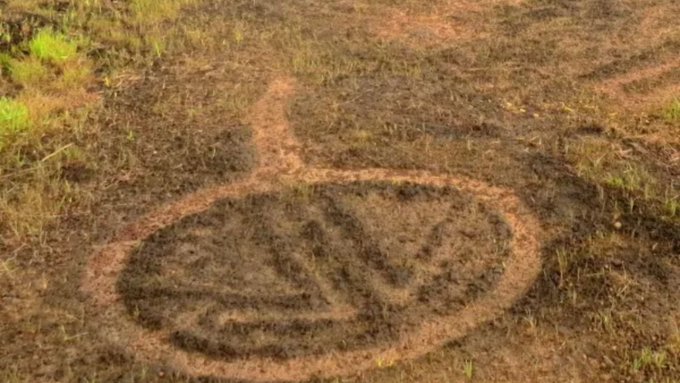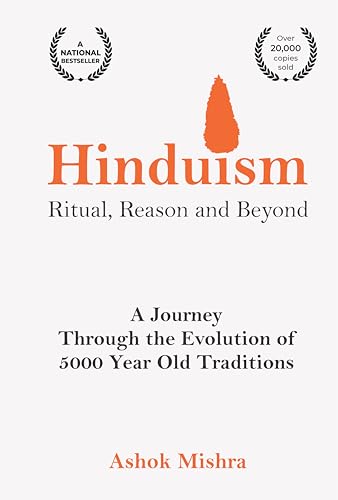2.3 Section 2: Definitions:
Let try to understand each definition given under Section 2 of the AMASR Act. These definitions are the guiding lamps for interpretation of the provisions of the said Act. In italics original bare Act definition is given, followed by the explanation.
2.3.1 Ancient Monument:
2. Definitions.―In this Act, unless the context otherwise requires,―
(a) “ancient monument” means any structure, erection or monument, or any tumulus or place of interment, or any cave, rock-sculpture, inscription or monolith, which is of historical, archaeological or artistic interest and which has been in existence for not less than one hundred years, and includes―
(i) the remains of an ancient monument,
(ii) the site of an ancient monument,
(iii) such portion of land adjoining the site of an ancient monument as may be required for fencing or covering in or otherwise preserving such monument, and
(iv) the means of access to, and convenient inspection of, an ancient monument;
Explanation:
An “ancient monument” is any structure, like a temple, fort, cave, rock sculpture, or burial mound, that’s at least 100 years old and holds historical, archaeological, or artistic value. It includes ruins, surrounding land for protection (like fencing), and access paths for visitors. Picture the Hari Har Temple or a hidden cave with ancient carvings; this clause ensures they’re cherished as Bharat’s heritage. It’s the Act’s heart, safeguarding sites that tell stories of the past for future generations. This definition is enshrines Public Trust Doctrine, Cultural Heritage Doctrine and Preventive Protection Doctrine.
2.3.2 Antiquity:
(b) “antiquity” includes―
(i) any coin, sculpture, manuscript, epigraph, or other work of art or craftsmanship,
(ii) any article, object or thing detached from a building or cave,
(iii) any article, object or thing illustrative of science, art, crafts, literature, religion, customs, morals or politics in bygone ages,
(iv) any article, object or thing of historical interest, and
(v) any article, object or thing declared by the Central Government, by notification in the Official Gazette, to be an antiquity for the purposes of this Act, which has been in existence for not less than one hundred years;
Explanation:
An “antiquity” covers objects like coins, sculptures, manuscripts, inscriptions, or artworks at least 100 years old, holding historical, artistic, or cultural value. It includes items detached from buildings or caves (e.g., a temple statue), objects reflecting Bharat’s past in science, art, religion, or politics, and anything the Central Government declares an antiquity via notification. Imagine a Gupta-era coin or a carved pillar fragment, which are treasures this clause protects from theft or smuggling, keeping Bharat’s history intact. Definition enshrines Cultural Property Doctrine, State Authority Doctrine and Preventive Conservation Doctrine.
2.3.3 Archaeological Officer:
(c) “archaeological officer” means an officer of the Department of Archaeology of the Government of India not lower in rank than Assistant Superintendent of Archaeology;
Explanation:
An “archaeological officer” is a government official from Bharat’s Department of Archaeology, holding at least the rank of Assistant Superintendent of Archaeology. These are the unsung heroes of heritage protection, overseeing excavations, inspecting monuments, and ensuring the Act’s rules are followed. Picture them as Bharat’s guardians of the past, ensuring a 3,000-year-old temple isn’t harmed by careless construction. They’re the experts on the ground, making sure sites like Sarnath remain safe and accessible for future generations. This definition enshrines Administrative Law Doctrine, Expertise Doctrine and Public Accountability Doctrine by sppointing officers as public servants for safeguarding heritage.
2.3.4 Archaeological Site and Remains
(d) “archaeological site and remains” means any area which contains or is reasonably believed to contain ruins or relics of historical or archaeological importance which have been in existence for not less than one hundred years, and includes―
(i) such portion of land adjoining the area as may be required for fencing or covering in or otherwise preserving it, and
(ii) the means of access to, and convenient inspection of, the area;
Explanation:
An “archaeological site and remains” refers to any area believed to contain ruins or relics of historical or archaeological importance, at least 100 years old. It includes adjacent land needed for fencing or preservation and access paths for inspection.[1] The definition enshrines Public Trust Doctrine, Preventive Protection Doctrine and Cultural Continuity Doctrine which recognize sites as vital links to Bharat’s historical narrative.
2.3.5 Authority:
1[(da) “Authority” means the National Monuments Authority constituted under section 20F;]
Footnotes:
1. Ins. by Act 10 of 2010, s. 2 (w.e.f. 16-6-1992).
Explanation:
The “Authority” refers to the National Monuments Authority (NMA), a body established under Section 20F to oversee the protection of Bharat’s ancient monuments and archaeological sites. The NMA is considered as Bharat’s heritage guardians, tasked with classifying monuments, advising on construction near protected sites, and ensuring development doesn’t harm cultural treasures like the Ajanta Caves.[2] It’s a modern command center, guiding competent authorities and balancing preservation with progress, making sure Bharat’s history shines bright. This definition is based on the Institutional Governance Doctrine, Public Interest Doctrine and Regulatory Oversight Doctrine.
2.3.6 Competent Authority:
(db) “competent authority” means an officer not below the rank of Director of archaeology or Commissioner of archaeology of the Central or State Government or equivalent rank, specified, by notification in the Official Gazette, as the competent authority by the Central Government to perform functions under this Act:
Provided that the Central Government may, by notification in the Official Gazette, specify different competent authorities for the purpose of sections 20C, 20D and 20E;
Explanation:
This definition was inserted by the 2010 amendment. The “competent authority” is a senior officer, at least at the rank of Director of Archaeology or equivalent, appointed by the Central Government to handle tasks like approving construction or repairs near Bharat’s protected monuments.[3] They are gatekeepers ensuring a new building near a historic fort like Gwalior doesn’t harm its legacy. They balance modern needs with heritage preservation, with the flexibility to assign different officers for specific roles (e.g., permissions under Sections 20C, 20D). It’s like having a trusted referee for Bharat’s cultural treasures. Administrative Delegation Doctrine, Public Welfare Doctrine and Specialized Oversight Doctrine are the main doctrines of this definition. The definition and the Act lack transparency on selection criteria, risking bias or inefficiency.
2.3.7 Construction:
(dc) “construction” means any erection of a structure or a building, including any addition or extension thereto either vertically or horizontally, but does not include any re-construction, repair and renovation of an existing structure or building, or, construction, maintenance and cleansing of drains and drainage works and of public latrines, urinals and similar conveniences, or, the construction and maintenance of works meant for providing supply of water for public, or, the construction or maintenance, extension, management for supply and distribution of electricity to the public or provision for similar facilities for public;
Explanation:
“Construction” refers to building any new structure or extending an existing one, vertically or horizontally, but excludes repairs, renovations, or maintenance of existing buildings, drains, public utilities like water or electricity lines, or similar public works.[4] It’s like a protective shield, allowing essential upkeep while blocking new constructions that could harm heritage sites like Sanchi Stupa, balancing Bharat’s past with modern needs. Preventive Regulation Doctrine, Sustainable Development Doctrine and Clarity of Scope Doctrine are the main rules of this definition which clearly separates construction from permissible activities for regulatory precision.
2.3.8 Director General:
(e) “Director-General” means the Director-General of Archaeology, and includes any officer authorised by the Central Government to perform the duties of the Director-General;
Explanation:
The “Director General” is the head of archaeology, typically from the Archaeological Survey of India (ASI), or any officer authorized by the Central Government to perform their duties. They’re the mastermind overseeing Bharat’s heritage protection, managing excavations, monument acquisitions, and preservation efforts. They are the chief curator ensuring treasures like the Red Fort or Konark Sun Temple remain safe. This clause centralizes leadership, ensuring a single authority drives the Act’s mission to safeguard Bharat’s cultural legacy with expertise and accountability. This definition is based on the doctrines such as Centralized Authority Doctrine, Delegation of Powers Doctrine and Public Trust Doctrine.
2.3.9 Maintain:
(f) “maintain”, with its grammatical variations and cognate expressions, includes the fencing, covering in, repairing, restoring and cleansing of a protected monument, and the doing of any act which may be necessary for the purpose of preserving a protected monument or of securing convenient access thereto;
Explanation:
“Maintain” means fencing, repairing, restoring, or cleaning a protected monument, or any act needed to preserve it or ensure visitor access. It’s like giving an ancient temple, such as Khajuraho, a careful touch-up to keep its carvings pristine and paths clear for tourists. This clause is the Act’s promise to keep heritage sites standing tall, ensuring they remain both safe and welcoming, preserving Bharat’s cultural legacy for future generations while making it accessible today. Preventive Conservation Doctrine, Public Access Doctrine and Cultural Preservation Doctrine are backbones of this definition.
2.3.10 Owner
(g) “owner” includes―
(i) a joint owner invested with powers of management on behalf of himself and other joint owners and the successor-in-title of any such owner; and
(ii) any manager or trustee exercising powers of management and the successor-in-office of any such manager or trustee;
Explanation:
An “owner” includes joint owners with management powers, their successors-in-title, or managers/trustees acting on their behalf. It broadens the term to cover complex ownership scenarios, making the Act practical for protecting Bharat’s heritage sites under diverse management structures while ensuring accountability.[5] Property Law Doctrine, Fiduciary Duty Doctrine and Succession Doctrine are enshrined under this definition. The definition excludes informal custodians, like local communities maintaining village shrines, missing their vital role in grassroots preservation. It lacks clarity on resolving ownership disputes, common in historic sites, which can delay protection efforts. Including community custodians and dispute resolution mechanisms could strengthen it.
2.3.11 Prescribed:
(h) “prescribed” means prescribed by rules made under this Act;
Explanation:
“Prescribed” means rules or procedures set by the Central Government under the Act, as published in the Official Gazette. It’s like the rulebook’s fine print, detailing how to apply for permissions, conduct excavations, or manage Bharat’s heritage sites. It is the government’s playbook for protecting treasures like the Sanchi Stupa, ensuring clear guidelines for everyone involved. This clause keeps the Act flexible, allowing rules to adapt to new challenges while maintaining a structured approach to preserving Bharat’s cultural legacy. The definition is backed by Rule of Law Doctrine, Administrative Flexibility Doctrine and Regulatory Clarity Doctrine
2.3.12 Prohibited Area:
1[(ha) “prohibited area” means any area specified or declared to be a prohibited area under section 20A;]
Footnotes:
1. Ins. by Act 10 of 2010, s. 2 (w.e.f. 16-6-1992).
Explanation:
A “prohibited area” is the zone immediately surrounding a protected monument or area, as defined under Section 20A, where strict restrictions apply to prevent activities like construction that could harm Bharat’s heritage.[6] This clause acts as a protective barrier, safeguarding the monument’s integrity and its immediate surroundings, preserving Bharat’s cultural gems for future generations. Preventive Protection Doctrine, Public Trust Doctrine and Cultural Preservation Doctrine are enshrined in this definition.
2.3.13 Protected Area:
(i) “protected area” means any archaeological site and remains which is declared to be of national importance by or under this Act;
Explanation:
A “protected area” is the land encompassing and surrounding a protected monument or archaeological site declared of national importance under AMASR Act. It’s like a sacred zone around treasures like the Ellora Caves, ensuring no harmful activities like mining or unauthorized building which may threaten their integrity. This clause creates a buffer to safeguard Bharat’s heritage, preserving not just the monument but its setting for future generations to cherish and explore. Public Trust Doctrine, Preventive Protection Doctrine and Cultural Heritage Doctrine are the main rules of the definition.
2.3.14 Protected Monument:
(j) “protected monument” means an ancient monument which is declared to be of national importance by or under this Act;
Explanation:
A “protected monument” is any ancient monument declared to be of national importance under Sections 3 or 4 of AMASR Act. It’s like a national treasure, such as the Taj Mahal or a centuries-old temple, officially recognized for its historical, archaeological, or artistic value. This clause ensures these iconic sites are safeguarded through strict regulations, preserving Bharat’s cultural heritage for future generations to marvel at and learn from. Public Trust Doctrine, Cultural Heritage Doctrine and State Authority Doctrine are important in this definition.
2.3.15 Re-Construction:
2[(k) “re-construction” means any erection of a structure or building to its pre-existing structure, having the same horizontal and vertical limits;
Explanation:
The “re-construction” refers to rebuilding or restoring a structure within a protected or regulated area, typically requiring permission from the competent authority to ensure it doesn’t harm Bharat’s heritage sites. This clause ensures it’s done carefully to preserve the monument’s historical value, balancing restoration with protection. The definition is based on Preventive Conservation Doctrine, Sustainable Development Doctrine and Regulatory Oversight Doctrine. The definition specifically mentions same horizontal and vertical limits of already existing structure shall be maintained in new construction. Thus no one can increase height or width or length of the re-constructed building situated in the nearby vicinity of the protected monument.
2.3.16 Regulated Area:
(l) “regulated area” means any area specified or declared under section 20B;
Explanation:
A “regulated area” is the zone extending 200 meters beyond the prohibited area surrounding a protected monument or archaeological site of national importance, as defined under Section 20B of AMASR Act. It is like a buffer zone around treasures like the Sarnath Stupa, where construction or other activities need permission to avoid harming the site’s heritage value. This clause ensures Bharat’s cultural landmarks are protected while allowing controlled development, balancing preservation with modern needs. Preventive Protection Doctrine, Public Trust Doctrine and Sustainable Development Doctrine support the definition.
2.3.17 Repair and Renovation:
(m) “repair and renovation” means alterations to a pre-existing structure or building, but shall not include construction or re-construction.]
Explanation:
The term “repair and renovation” refers to fixing or restoring existing structures within prohibited or regulated areas around Bharat’s protected monuments, requiring competent authority approval to ensure no harm to heritage sites. This clause ensures careful work to preserve Bharat’s cultural treasures while maintaining their historical integrity. Preventive Conservation Doctrine, Public Welfare Doctrine and Regulatory Oversight Doctrine can be observed in this definition.
References:
[1] Hari Shankar And Anr. vs Union Of India (Uoi) And Ors., [AIR2000RAJ26, 2000(1)WLC351]
[2] Ardhendu Kumar Das Vs State Of Odisha And Ors. [(2022) 6 JT 532]
[3] Ardhendu Kumar Das Vs State Of Odisha And Ors. [(2022) 6 JT 532]
[4] Parisar Sanrakshan Sanwardhan Sanstha vs Pune Municipal [AIR 2014 (NOC) 12 (BOM.)]
[5] Union vs Saiyed, Gujarat High Court, FA/1166/1985, Dt. 22.09.2008, available at https://indiankanoon.org/doc/1992101/, Last visited on 18.07.2025
[6] Shri. Manjunath S/O Satish Amate vs Conservation Assistant, Karnataka High Court, WRIT PETITION NOS.108680-108681/2018 (GM-RES) Dt. 10.07.2020, available at https://indiankanoon.org/doc/84059420/, Last visited on Dt. 18.07.2025

Image credit: https://x.com/GemsOfINDOLOGY





Pingback: 3.1 Criticism of adopted definitions: – bharatlex-rinkutai.com
Pingback: Administrative Delegation: A Key to Efficient Governance – bharatlex-rinkutai.com
Nicely explained